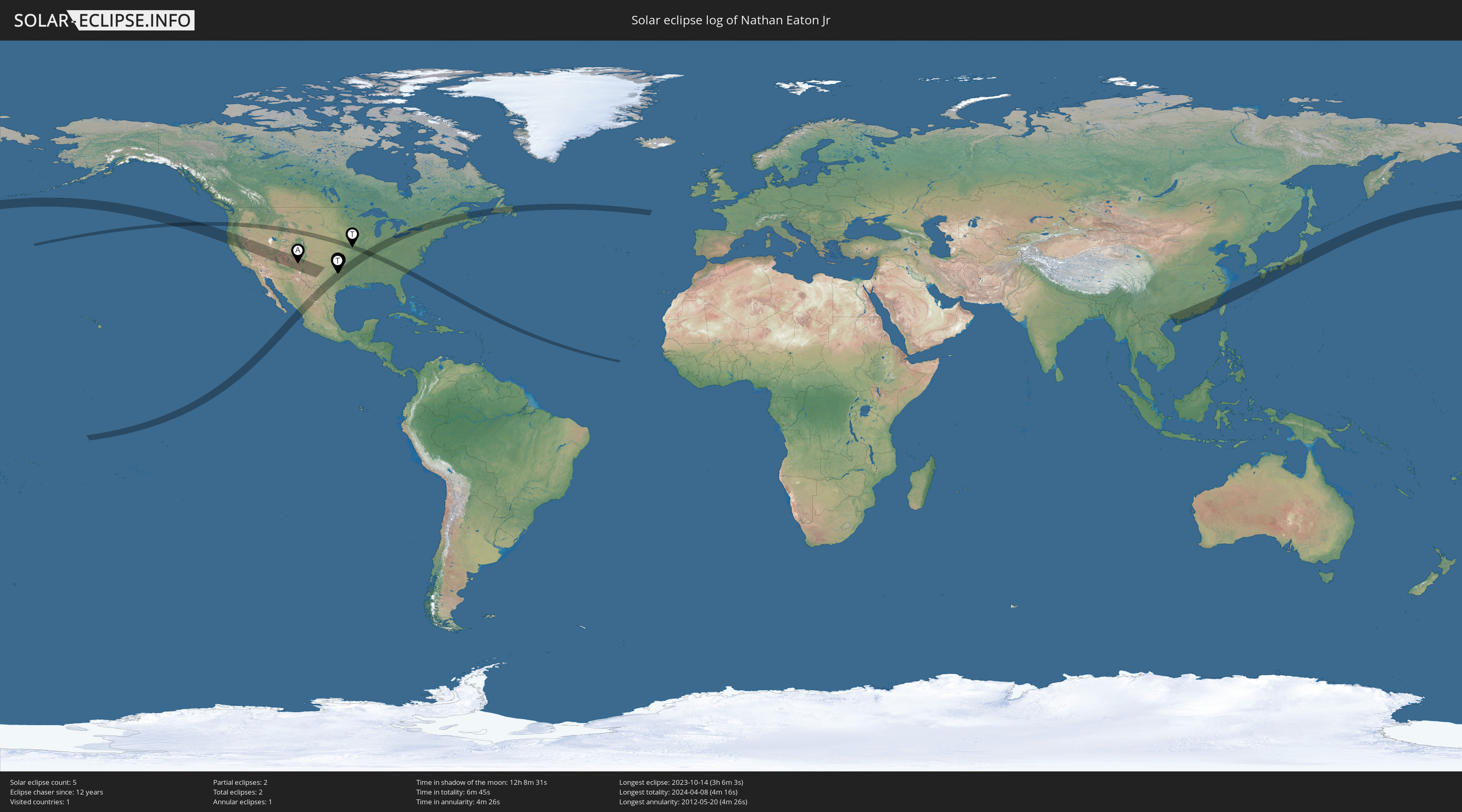Last month, my granddaughter Harper and I went out to capture an image of the International Space Station (ISS) flying over Dallas. As described in my post about that effort, we were only partially successful, foiled by clouds. This past Tuesday evening, granddaughter Olivia and I headed up to the north shore of White Rock Lake to try again. In spite of being a little late getting to the lake and rushing to set up cameras, we managed to catch the last 90 seconds or so of the ISS flyover as it traveled from the northwest, overhead and down to the southeast. Here is the result.
This photo demonstrates an interesting aspect of ISS flyovers. We can see the ISS fly by only at certain times and places, its visibility due to the viewer being in a position to see sunlight reflected off of the ISS. For this flyover, as it was traveling "away" from the sun (which had set just over an hour earlier) its orbit carried it into the Earth's shadow. Notice how the lowest trail fades off and disappears.
Another interesting object in the sky that night was the Sturgeon Moon, the first of two "supermoons" this month. It was cloaked in clouds until just as we were getting in the car to head home so it just appears in this image as a bright glow to the lower left. Note all the people on the dock though; there was quite a crowd out that night with people all up and down the shoreline to watch the full moon rising. I wonder how many of them also realized they were getting a chance to see the ISS, too.
We also tried to capture a flyover of a satellite, BlueWalker 3, which passed over this same view looking south across the lake about a half-hour before the ISS flyover. Unfortunately, even having two cameras shooting during its flyover, we didn't capture it. I'm not sure whether it was due to its lower elevation, the haze to the south east or a miscalculation on my part about where and when we would see it. That'll be a target to try for another night.
Thanks to the long exposures taken, the composite includes more than just the ISS and the Moon. Stars of the constellation Sagittarius (the Archer) and Scorpio (the Scorpion) are visible including Antares, the red super-giant star that is known as the Heart of the Scorpion. Here is a labeled version of the image above.
The images above were edited to remove all the other stuff we saw in the sky that night: aircraft. The following is a composite of 12 images stacked "as is" in Photoshop. It shows not only the ISS but all the aircraft trails captured. Having simply stacked the images, stars appear as streaks and headlights and taillights of cars on the far shore of the lake appear as streaks.
One final image, this time an edited stack of all the images, showing not only the ISS but all the aircraft trails captured. Unlike the unedited stack, in this view the sky (Moon and stars), lake and even the car headlights on the far shore are all from a single image. The aircraft and ISS trails from the other 11 images were masked to overlay that single image.
As always, click on an image to see large.

























No comments:
Post a Comment